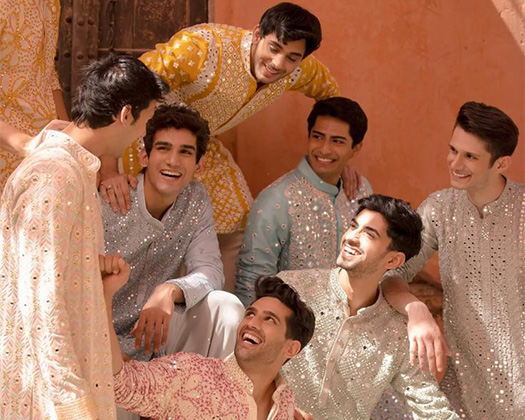Exploring the Global Tapestry of Men's Fashion
Introduction
Fashion is a universal language that transcends borders, and it reflects the rich tapestry of cultures around the world. Men's fashion, in particular, has been greatly influenced by the diversity of global traditions, history, and societal norms. In this article, we will embark on a journey to uncover how various cultures have left their indelible marks on men's fashion trends and aesthetics.
Western Elegance and Classicism
In the Western world, especially in Europe, classical ideals have shaped men's fashion for centuries. Countries like Italy and France have long been regarded as fashion capitals, known for their impeccable tailoring and luxurious fabrics. The tailored suit, characterized by its precise cuts and attention to detail, epitomizes Western elegance. British tailoring, with its emphasis on bespoke suits and Savile Row craftsmanship, stands as a testament to this tradition.
Japanese Minimalism and Precision
Japan, a country celebrated for its minimalistic aesthetics, has significantly impacted men's fashion. The concept of "Wabi-Sabi" has influenced designers to embrace imperfection, simplicity, and natural materials. Japanese brands like Comme des Garçons and Issey Miyake have redefined men's fashion through avant-garde designs that challenge conventional norms.
Indian Opulence and Tradition
India's rich cultural heritage has influenced men's fashion in a myriad of ways. The ornate garments, such as sherwanis and kurta-pajamas, showcase intricate embroidery and vibrant colors. The fusion of traditional Indian textiles with modern cuts has created a unique blend of opulence and comfort, appealing to both local and international fashion enthusiasts.
African Boldness and Identity
Africa is a continent renowned for its diverse cultures and vibrant aesthetics. African prints and textiles, like Ankara and Kente, have found their way into global fashion trends. African designers are celebrated for their bold use of patterns and colors, which not only reflect their heritage but also redefine modern men's fashion with a touch of cultural pride.
South American Passion and Panache
South America's passion for life is mirrored in its fashion. Countries like Brazil are known for their vibrant streetwear culture, featuring bold colors and relaxed cuts. In contrast, countries like Argentina showcase the elegance of the gaucho style, characterized by wide-brimmed hats and leather accessories. These distinct influences collectively contribute to the tapestry of men's fashion.
Middle Eastern Modesty and Luxury
The Middle East has a profound influence on men's fashion, especially in the realm of luxury clothing. Traditional garments like the thobe and kandura, adorned with intricate embroidery and fine fabrics, represent a blend of modesty and opulence. Middle Eastern designers like Elie Saab and Zuhair Murad have gained international recognition for their exquisite creations.
Asian Streetwear and Innovation
Asian countries, particularly South Korea and Japan, have played a significant role in shaping streetwear and contemporary men's fashion. Brands like Supreme, A Bathing Ape (BAPE), and Off-White have gained global acclaim for their urban aesthetics and innovative designs. K-Pop and J-Pop cultures have also contributed to the rise of gender-neutral fashion, further reshaping the industry.
Conclusion
Men's fashion is a canvas that captures the essence of cultures from around the world. Each region adds its unique thread to the tapestry, creating a dynamic and ever-evolving landscape. The fusion of these diverse influences has led to a globalized men's fashion scene where boundaries are blurred, and creativity knows no limits. As we continue to celebrate this fusion of cultures, men's fashion remains a testament to the rich, interconnected world we live in.








